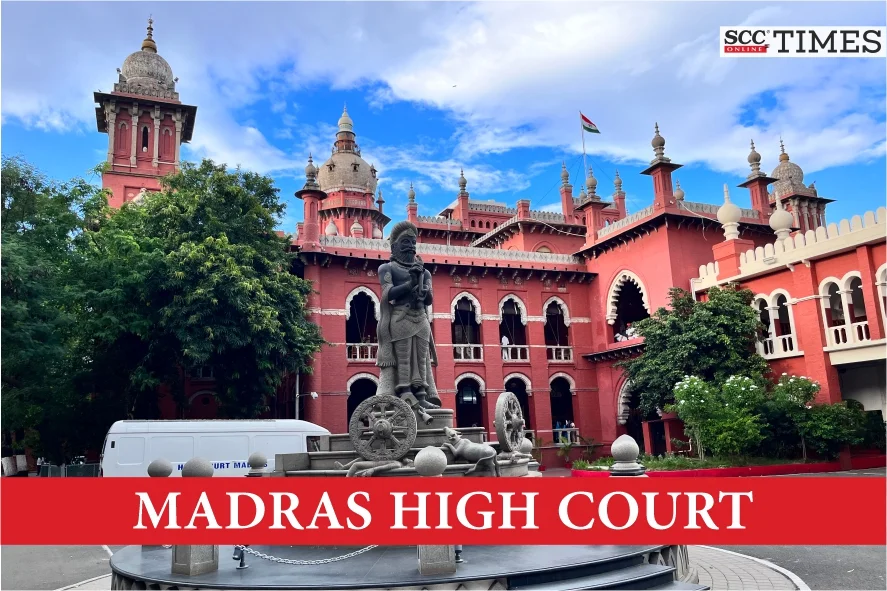Madras High Court: In an appeal filed by Microsoft Technology Licensing (‘Microsoft’) against the order passed by the Assistant Controller of Patents and Designs(‘Controller’) whereby Patent Application, which is the national phase application derived from PCT Application dated 15-09-2010, was rejected of the Senthilkumar Ramamoorthy, J. while setting aside the impugned order, said that the claimed invention would not be obvious from cited prior art, as the cited prior art is focused on the publication of sensor values upon occurrence of an event of interest to enable the subscribing application to receive sensor data only when there is a change in sensor values. By contrast, the problem resolved by the claimed invention is the transmission of sensor data in a form which is easy to process by the subscribing application.
Microsoft filed the patent application on 27-02-2012 for an invention titled “Message Communication of Sensor and other Data” claiming priority from 23-09-2009. Pursuant to a request for examination, the first examination report (FER) was issued by the Controller on 27-06-2019. Microsoft filed a detailed response thereto on 27-12-2019. Along with such response, amended claims 1 to 14 were filed. The hearing was conducted on 14-07-2020 and Microsoft filed written submissions thereafter. Eventually, by order dated 29-09-20, the application was rejected. The present appeal arises in the said facts and circumstances.
The Court said that the application for the grant of patent was rejected under Section 2(1) (ja) of the Patents Act, 1970 largely on the basis that the claimed invention would be obvious to the person skilled in the art based on the teachings of prior art D4.
The Court took note of Section 2(1)(ja) of the Patents Act, which defines inventive step, and said that the assessment of inventive step of a claimed invention is to be made by a two-step process. It underscores the centrality of the person skilled in the art (PSITA). The starting point in identifying PSITA is the field of invention, which is enabling applications in computers to receive sensor data by way of lightweight messages. The PSITA would, therefore, be a software engineer with an understanding of hardware/computer electronics.
The Court noted that the problem, that the claimed invention addresses itself to is the reduction of complexity by converting raw sensor data into lightweight messages which are transmitted or communicated to the subscribing application.
Since the impugned order relied only on prior art D4, the Court did a comparison with said prior art, and said that the solution provided by the claimed invention is the conversion of raw sensor data into messages that are transmitted to the subscribing application and may be easily read by such application. By contrast, the cited prior art does not envisage the conversion of raw sensor data into easy-to-read messages.
Thus, the Court said that the Controller is correct in stating that both the cited prior art and the claimed invention provide for the transmission of sensor data to a subscribing application, but the difference lies in how such data is transmitted.
Concerning whether prior art D4 contains teaching, suggestion or motivation to lead the PSITA to the claimed invention, the Court took note of complete specification of D4, and said that there is nothing in prior art D4 that addresses the problem of complexity in the communication of data from sensors to subscribing applications. Thus, not only is the problem addressed by the prior art and the claimed invention different but even otherwise the recitals and disclosures in D4 do not suggest or motivate, much less teach, the PSITA to arrive at the claimed invention.
The Court viewed that claimed invention would not be obvious to the PSITA from prior art D4 because arriving at the claimed invention from D4 requires ingenuity and not mere skill in the art.
The Court said that the claimed invention would not be obvious from cited prior art, as the cited prior art is focused on the publication of sensor values upon occurrence of an event of interest to enable the subscribing application to receive sensor data only when there is a change in sensor values. By contrast, the problem resolved by the claimed invention is the transmission of sensor data in a form which is easy to process by the subscribing application.
Thus, it set aside the impugned order and allowed the application to proceed to grant subject to amendment of the independent claims.
[Microsoft Technology Licensing LLC v. Assistant Controller of Patents and Designs, 2024 SCC OnLine Mad 285, decided on 28-02-2024]
Advocates who appeared in this case:
For Appellant: Advocate Vindhya S.Mani, Advocate Kiran Manokaran
For Respondent: SPC S.Diwakar







